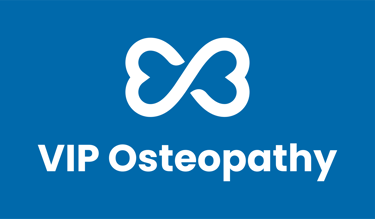Shoulder pain is frustrating enough when you're lifting, reaching, or trying to sleep—but when it starts creeping into the everyday (like doing your hair or reaching for a cup), it’s downright exhausting. One of the most common culprits? Rotator cuff tendinopathy.
If this sounds like you, then you’re not alone—and you’re not stuck like this forever. At VIP Osteopathy, we are here to help people move from "Why does this keep happening?" to "I’ve got this!"
What’s Going On In There?
The rotator cuff is a group of muscles and tendons that stabilise your shoulder and help you move your arm. When those tendons become irritated, overloaded, or compressed, it leads to inflammation, weakness, and that classic deep ache. Here are a few common contributors we see in clinic:
Repetitive overhead movements (think painting, lifting, throwing)
Poor shoulder mechanics or posture
Muscle imbalances or weakness through the upper back and core
Sudden increase in activity—especially if you’re getting back into training or DIY projects
Pain might build slowly or come on suddenly—but either way, it tends to linger if the underlying issues aren’t addressed.
Here’s How We Help
At VIP Osteopathy, we don’t just treat the painful shoulder—we figure out “why” it’s under stress in the first place. We assess how your whole body moves, from your spine and ribcage to your shoulder blade and neck. Often it’s not just about the shoulder, but how everything works (or doesn’t work) together.
With hands-on osteopathic treatment and targeted movement based therapy, we’ll aim to help:
Reduce inflammation and pain
Improve how your shoulder moves and feels
Support long-term strength and mobility—so that the pain doesn’t keep coming back
And you won’t be left guessing as to what's next. You’ll leave with a tailored plan, including:
Strength and mobility exercises you can actually stick to
Advice on posture, desk setup, and training load
Clear guidance on what movements to modify (and what’s safe to keep doing)
What You Can Start Doing Now
Avoid sleeping directly on the sore shoulder—support it with a pillow in front of you
Apply a cold pack for short bursts to reduce inflammation, or alternate with a heat and cold pack to promote fresh blood flow to the area
Keep the shoulder gently moving rather than locking it up
Ease off any aggravating movements, but don’t stop moving altogether
If your shoulder pain isn’t going away, or it keeps sneaking back - then it’s time to get some support. Let’s figure it out together and get you back to feeling strong, mobile, and confident in your body again.




